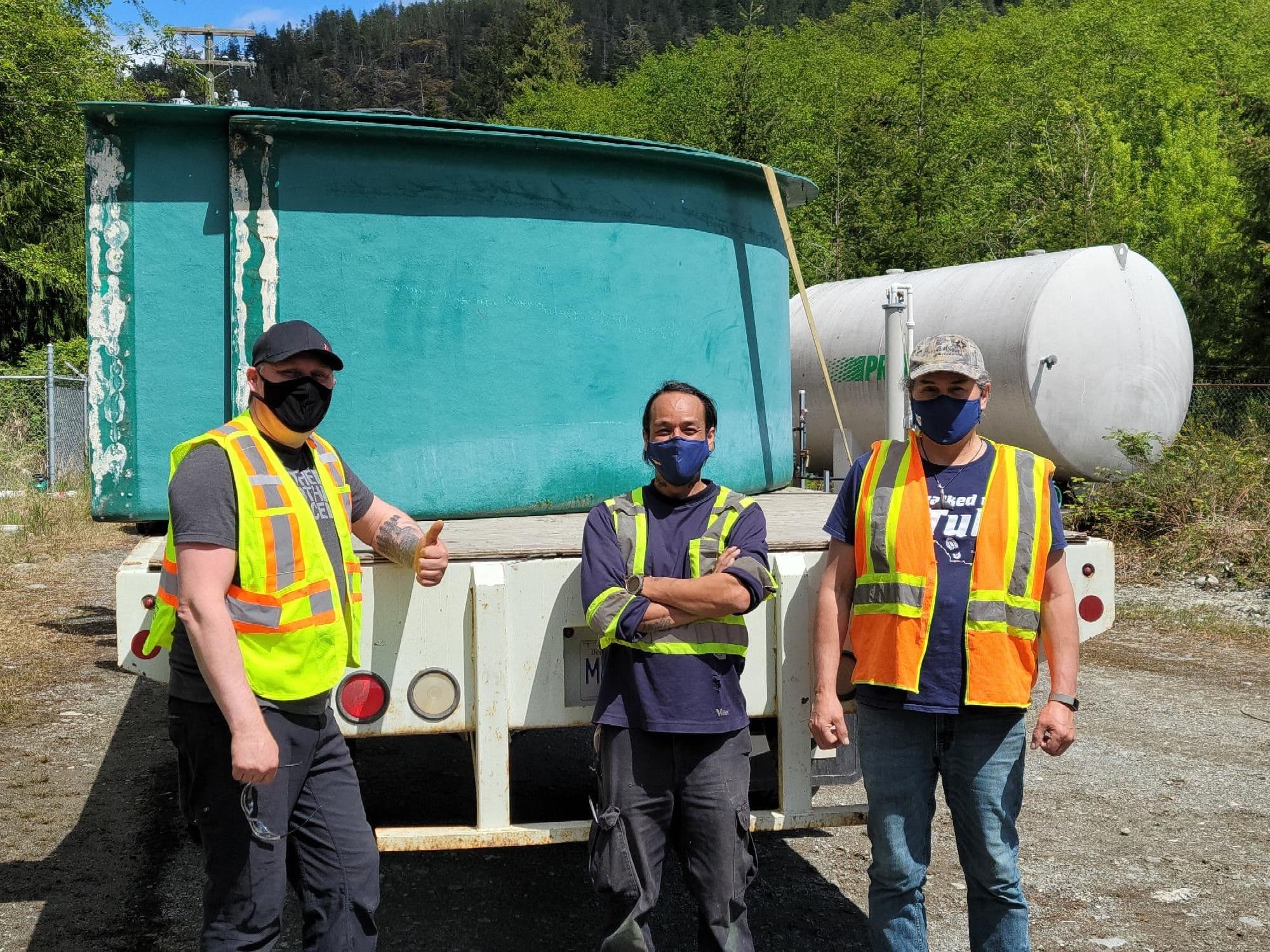
With some project funding from the Department of Fisheries & Oceans (DFO) and the donation of a new tank from Grieg Seafood, the Ehattesaht Chinexint’s Chum hatchery in Zeballos will be operating “a lot smoother” this fall when brood takes begin.
Representatives from the Ehattesaht, the Nuu-chah-nuth Tribal Council (NTC), DFO and Grieg began discussing upgrades and options for the Zeballos Hatchery a year and a half ago. They decided the priority was to remove the existing steel tank, which was posing a risk, and, once it was determined a tank from Grieg would fit the requirements of the hatchery, a date was set to replace the old steel tank.
“The old tank was rotten and ready to tip over, so plans to move the tank were of the utmost importance to the safety of everyone in and around the hatchery,” said Dave Miller, the Ehattesaht Chinexint Fisheries’ advisor.
“With the help from Totem Bar Contracting, a local road builder and road contractor, I made contact with Glen McCall to have him come and remove the old tank. When asked, Glen said ‘No problem and no charge.’ He donated his excavator and his time with a crew to help remove the tank.”
Next, Miller travelled to Grieg Seafood’s freshwater hatchery in Gold River to pick up the round tank, which had been dismantled for transportation. Its pieces were loaded onto a flat-bed truck and transported back to Zeballos, where it was put together by Miller and NTC’s Jamie James.
“We hope to capture brood stock this year in the amount of 20,000 Chum eggs, and work towards a Chinook brood take from the Zeballos River in a few years, as we have done in the past,” Miller said. “With the new tank replacement, as well as the upgrades to the hatchery, operations will run a lot smoother for us. This is our hope.”
“I’d like to thank Grieg for the donation of the circular tank and also all those who contributed to the work. There’s still lots to complete.”
“It’s important to work with First Nations communities in any capacity, whether by donating equipment, or by providing the skill and expertise within Grieg,” said OD Hansen, Grieg’s Director of Reconciliation & Partnerships. “Grieg will continue to work and support our partners on projects that will enhance wild salmon restoration.”
Since 2016, Grieg has offered technical support to the hatchery from its Gold River hatchery staff, who have expressed an interest in volunteering at the Zeballos Hatchery. In recent years the hatchery has been managed by an Ehattesaht employee in partnership with students from the Zeballos high school.
Grieg has attended previous releases of chum fry raised in the hatchery and returned to the Zeballos River. Several years ago, with a change of principal, the involvement of high school students did not move forward.
“With the re-start of the hatchery by a joint committee of Ehattesaht, DFO and Grieg representatives, our commitment to provide the support of our Gold River hatchery technicians will still be made available,” said Hansen.
Miller added that the Nation is also looking at forming its own Esperanza Watershed Society to enable an easier flow of funding for the hatchery.